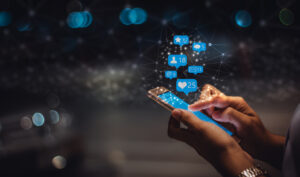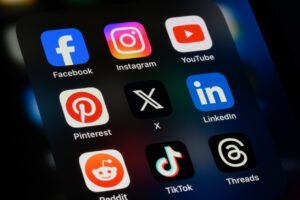The influencer opportunity too many brands overlook
The NFL and Adobe have learned this lesson well.

Jeff Barrett is founder & CEO of Status Creative.
We all know what influence is and why it matters, but there’s a missed PR and marketing opportunity hiding in plain sight. I’m always quietly surprised when I don’t see this as a mainstream idea.
The part we often miss is that the brand itself has the power, leverage, scale and contacts to bring return value to the creator. If you bring a creator speaking opportunities, client introductions and other ways to amplify their audience, they are going to have a long-term relationship with your brand because it is elevating their career. The best part? It only costs you the time and energy to make introductions and shift your focus from what you can get from a creator to what you can bring to a creator.
There’s also exponential return in long-term relationships. You eliminate turnover and time spent having to reach out to new groups. You can mobilize a creator network quickly for timely content when they are already engaged. And there’s an authority you can create as a brand by having a wide range of diverse voices aligned with you.
This is relationship building. This is PR. This is what we do. It makes way more sense for the brand/creator relationship to exist under our umbrella.
The NFL gets this concept and puts it into action. Martin Bowier leads influencer and talent marketing for the league.
“It’s important to create mutual value in the creator relationships so it stays just that, relational versus transactional,” Bowier said. “In the competitive pay landscape, we make sure to offer ‘money can’t buy’ opportunities and premium experiences with our talent so they keep coming back for more and authentically share their experience with their audiences.”
For a league that is undeniably popular, it’s hard to they can grow further. But with programs like Creator of The Week on YouTube, Bowier is bringing in new fans and audiences. The NFL YouTube channel has more than 12M subscribers, which is enticing for almost any creator. And even though there are some guardrails, Bowier gives unprecedented access and allows creators to do what they do best.
“Our hope is that we are doing a good job of fostering a collaborative environment, so the exchange remains mutually beneficial and authentic. We work with creators, influencers, and celebrities because we are first fans of their work (and they are fans of the NFL), so we want them to bring their authentic selves,” added Bowier.
I have had the great fortune of working on these kinds of programs with Rani Mani, who has led influencer programs and now is part of Adobe’s Customer Comms team. She and Martin share the same trait of focusing on the relationship more and trusting the content will follow.
For Mani, “it’s essentially the same as dating with an eye towards long-term commitment versus one-night stands. A give-to-get approach sustained over a long period of time establishes meaningful mutual value in a way one-off transactions simply do not. It’s not all that different from successful personal relationships. Genuine interest, engagement, and connection between creators and brands is what results in powerful and loyal brand advocates. One-offs result in unnecessary and ineffective churn and ROI because each party is constantly moving on to the next shiny engagement/person.”
Abhijit Bhaduri has led talent development for Microsoft, Pepsi, Colgate and more. He’s SHRM’s top influential voice with more than 1 million followers on LinkedIn and wrote extensively about the concept of upskilling in Harvard Business Review.
My theory is that the same processes used by human resources internally to develop and upskill talent can be applied externally to the brand/creator relationship. This way there is no new department that needs to be created and the process can scale with speed and efficiency. His thoughts:
- The synergy of micro-influencers:
Imagine a harmonious blend of internal champions and external influencers. These micro-influencers, drawn from within the organization, possess authentic voices and genuine connections. Their collective power lies in their ability to amplify the talent brand. By sharing their experiences, they create an organic narrative that resonates with potential hires and existing employees alike.
- Beyond transactions: A symbiotic relationship:
Unlike transactional endorsements, this partnership thrives on continuous engagement. The brand and the influencer become inseparable—two sides of the same coin. Authenticity prevails over scripted endorsements. Employees-turned-influencers share unfiltered glimpses into their work lives, fostering trust and relatability. They can co-create content that is authentic.
- HR and PR to co-create this creator community
HR collaborates with PR, to attract, develop, and retain these influential voices. The creators among employees—whether they’re crafting code or curating content—form a cohesive community. Think of influencers as employees with a unique set of performance metrics: engagement, impact, and resonance.
You’re going to be met first with confusion. It’s not that the idea is confusing, but the implementation. Investing in the careers of external advocates is a foreign concept.
What I have learned over time is that you have to show three things to activate this idea:
- Highlight a brand already executing this concept at scale so the organization can visualize what success looks like.
- Have a strong partner advocate for your ability to curate this concept effectively and tailor the outcomes to what the brand needs most.
- Show how the idea can be executed without adding new processes or diverting resources.
Good luck. I’ll be here to answer questions along the way.






